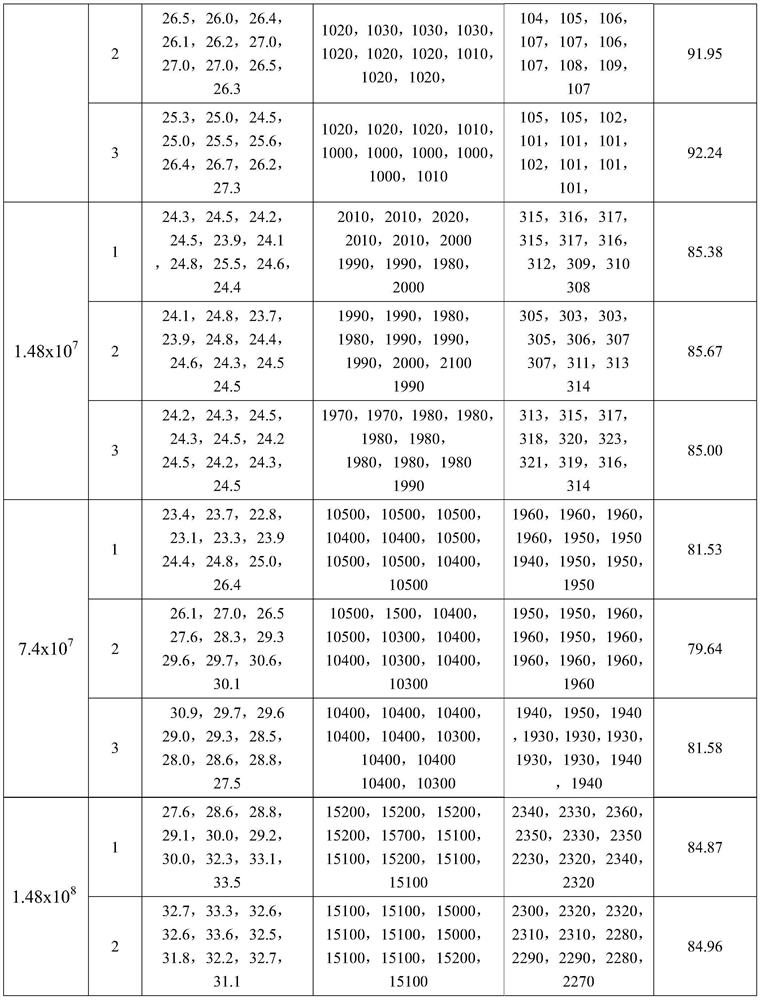Nuclide decontaminating solution as well as preparation method and application thereof
A decontamination solution and nuclide technology, which is applied in the field of decontamination solution, can solve the problems of reduced solubility, reduced fluidity of decontamination agent, limited solubility, etc., to achieve improved decontamination efficiency, improved chelation efficiency, and improved chelation Effect
- Summary
- Abstract
- Description
- Claims
- Application Information
AI Technical Summary
Problems solved by technology
Method used
Image
Examples
Embodiment 1
[0054] A nuclide decontamination solution, consisting of the following components in weight percent: 0.3% pentasodium diethylenetriaminepentaacetic acid, 0.1% auxiliary chelating agent, 0.1% sodium silicate, 0.1% adsorbent, and 1% surfactant , potassium sorbate 0.1%, X-278 water-based silicone defoamer (purchased from Yantai Hengxin Chemical Technology Co., Ltd.) 0.1%, tartaric acid 0.1%, sodium borate 0.1%, water balance.
[0055] The auxiliary chelating agent is a mixture of sodium gluconate, disodium edetate and hydroxyethylene diphosphonic acid, and the mass ratio of the three is 3:1:1;
[0056] The adsorbent is a mixture of chitosan and sodium alginate, and the mass ratio of the two is 0.5:1;
[0057] The surfactant is a mixture of alkyl glucoside and polyoxyethylene octylphenol ether, and the mass ratio of the two is 1:1.
[0058] The preparation method of nuclide decontamination solution is as follows:
[0059] (1) Mix diethylenetriaminepentaacetic acid pentasodium,...
Embodiment 2
[0063] A nuclide decontamination solution, consisting of the following components in percentage by weight: 6% of pentasodium diethylenetriaminepentaacetic acid, 5% of auxiliary chelating agent, 2% of disodium hydrogen phosphate, 2% of adsorbent, and 10% of surfactant %, sodium benzoate 1%, X-278 water-based silicone defoamer 1%, sodium carbonate 1%, urea 2%, water balance.
[0064] The auxiliary chelating agent is a mixture of sodium gluconate, disodium edetate and hydroxyethylene diphosphonic acid, and the mass ratio is 5:3:1;
[0065] Described adsorbent is the mixture of chitosan and sodium alginate, and mass ratio is 2:1;
[0066] The surfactant is a mixture of alkyl glucoside and polyoxyethylene octylphenol ether with a mass ratio of 3:1.
[0067] The preparation method of nuclide decontamination solution is as follows:
[0068] (1) Mix pentasodium diethylenetriaminepentaacetic acid and auxiliary chelating agent with 50% water of formula quantity, dissolve until trans...
Embodiment 3
[0072] A nuclide decontamination solution, consisting of the following components in weight percent: 3% pentasodium diethylenetriaminepentaacetic acid, 2.5% auxiliary chelating agent, 2% sodium citrate, 1% adsorbent, and 5% surfactant , potassium sorbate 0.5%, X-278 water-based silicone defoamer 1%, citric acid 1%, sodium borate 1%, water balance.
[0073] The auxiliary chelating agent is a mixture of sodium gluconate, disodium edetate and hydroxyethylene diphosphonic acid, and the mass ratio of the three is 4:2:1;
[0074] The adsorbent is a mixture of chitosan and sodium alginate, and the mass ratio of the two is 1:1;
[0075] The surfactant is a mixture of alkyl glucoside and polyoxyethylene octylphenol ether, and the mass ratio of the two is 2:1.
[0076] The preparation method of nuclide decontamination solution is as follows:
[0077] (1) Mix pentasodium diethylenetriaminepentaacetic acid, auxiliary chelating agent and 40% water of formula quantity, dissolve until tr...
PUM
 Login to View More
Login to View More Abstract
Description
Claims
Application Information
 Login to View More
Login to View More - R&D
- Intellectual Property
- Life Sciences
- Materials
- Tech Scout
- Unparalleled Data Quality
- Higher Quality Content
- 60% Fewer Hallucinations
Browse by: Latest US Patents, China's latest patents, Technical Efficacy Thesaurus, Application Domain, Technology Topic, Popular Technical Reports.
© 2025 PatSnap. All rights reserved.Legal|Privacy policy|Modern Slavery Act Transparency Statement|Sitemap|About US| Contact US: help@patsnap.com



